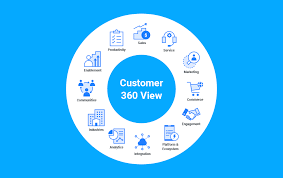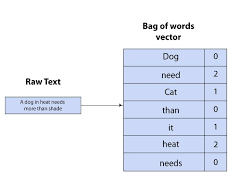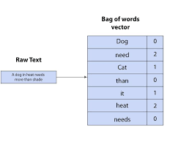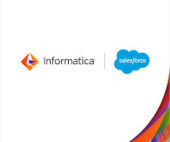Remember When Salesforce First Launched Financial Services Cloud in 2016?
The managed package introduced a standardized data model that transformed how banks, credit unions, and implementation partners utilized Salesforce. It was a game-changer!
But Salesforce hasn’t stopped innovating. Since 2019, they’ve been enhancing the core platform to meet demands for greater performance and flexibility. Now, in 2024, Salesforce has rolled out its biggest core release yet: Financial Account Management Standard Objects. This strategic update could redefine how financial data is managed within Financial Services Cloud (FSC).
Understanding these updates is essential for all FSC users. The introduction of standard objects signals a major shift in the platform. Staying informed ensures that your institution remains innovative and fully leverages Financial Services Cloud.
Let’s explore what’s changing and why it matters.
1. A New Era for Financial Accounts
Say goodbye to limitations and hello to flexibility! The core platform introduces a modern way to manage financial accounts:
- More flexible account ownership: Move beyond the primary/joint owner model. Core now supports a more flexible approach to managing account ownership and relationships that reflect complex, real-world scenarios.
- Expanded toolkit: Utilize new objects like Party Financial Asset and Financial Account Fee to manage intricate financial relationships seamlessly.
- Improved performance: With the removal of financial account triggers, expect a performance boost. This change facilitates real-time integrations and a more efficient data model.
The elimination of financial account triggers is a huge win for performance. Salesforce’s new data model is designed to handle real-time integrations, which can be a game-changer for many institutions. But real-time integration isn’t necessary for everyone. Depending on your organization’s needs, you might find that a combination of batch integration, on-demand integration, and data visualization works best. If you’re dealing with slow nightly batch data loads due to financial account triggers, exploring the new standard objects could be the solution to your performance woes.
2. Core Offers Benefits for Everyone
- New to Financial Services Cloud? Core provides the flexibility to build a tailored solution that aligns with your needs, avoiding unnecessary complexity. Whether you integrate with existing systems or leverage Salesforce AppExchange apps, Core allows for a more customized approach. This is especially advantageous for fintech startups, credit unions with unique needs, or institutions seeking a streamlined foundation.
- Already using Financial Services Cloud? Your current setup will continue to function. But why stick with the status quo when Core offers increased customization, future-proofing, potential cost savings, and a more efficient user experience? If you’re facing performance challenges, especially with integration or nightly data loads, consider testing the new financial account standard objects in a sandbox first.
3. The FSC Managed Package is Still Supported
Salesforce has reassured customers that the FSC Managed Package will continue to be supported. However, with Core advancements, Salesforce is re-evaluating its long-term strategy to provide more streamlined and scalable solutions.
While migration to Core isn’t mandatory, Salesforce’s ongoing focus on this new architecture suggests that aligning with the core platform may offer increasing benefits over time. To stay ahead of the curve and access the latest features, it’s wise to explore the potential advantages of migration. Tectonic can help assess your current environment, weigh the benefits of moving to Core, and develop a strategy that aligns with your business goals.
4. Exciting Core Enhancements
Core introduces powerful new features that simplify financial data management, such as:
- Flexible households: The new “Party Relationship Group” object offers a more intuitive way to model households and relationships, accommodating complex family structures and business affiliations.
- Enhanced householding capabilities: With the elimination of financial account triggers and the Data Processing Engine, you can now roll up financial data to multiple households or groups, providing a more comprehensive view of customer relationships and financial holdings.
- Increased rollup performance and improved UI: The original managed package’s rollup-by-lookup configuration had limitations, but the Core release includes eight out-of-the-box Data Processing Engine templates for high-performance rollups. Salesforce is also introducing new Lightning Web Components (LWC) for real-time record and summary rollups, with even more on-demand capabilities in development.
5. The Future Is Core, and You Need the Right Partner to Chart Your Course
Salesforce’s shift toward Core highlights the platform’s future direction. While the managed package remains relevant for now, Core offers a more modern, flexible solution for managing financial data. To make the most of these changes and ensure a smooth transition, partnering with an experienced team like Tectonic is crucial.
Transitioning to Core requires careful planning. Here’s a roadmap to guide you:
- Assess and explore: Evaluate how Core functionalities align with your long-term goals. Work with a trusted partner to explore the new features in a sandbox environment and assess their impact on your organization.
- Test thoroughly: Before enabling the new financial account data model in your production environment, test it extensively in a sandbox to identify potential issues and ensure a smooth rollout.
- Develop a migration plan: If you decide to adopt the new financial account standard data model, plan a careful migration or integration process to minimize disruption.
- Choose your path: Salesforce allows you to use either the Financial Services Cloud managed package objects or the standard objects—but avoid mixing the two when configuring financial accounts and related features.
Ready to Explore the Power of Core?
Contact Tectonic today to learn how we can help guide your transition to Core and capture the full potential of these new features to drive your business forward.













